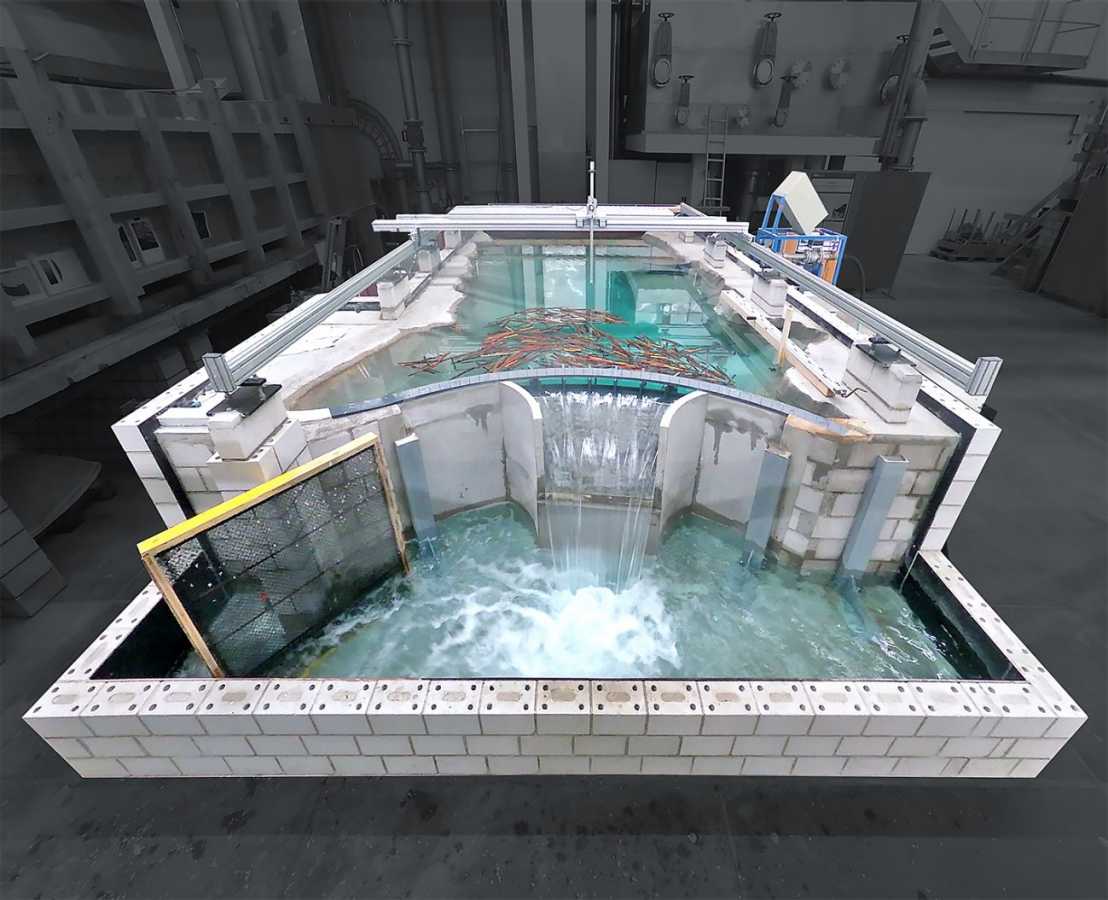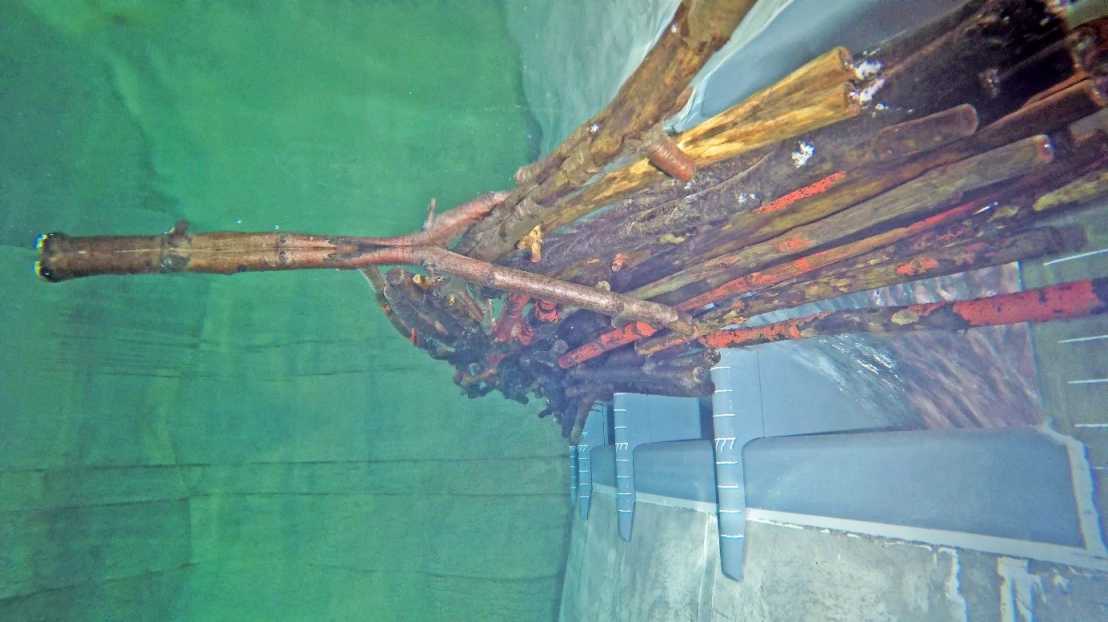Large wood retention at overflow spillways of high dams
A new VAW report, published by the Swiss Federal Office of Energy, allows not only to determine the potential water level rise at an existing dam due to large wood accumulation at the overflow spillway, but also to design the required protrusion of the weir piers as a possible measure to safely retain large wood. For the first time, various porosities of the accumulation were also included.

Floating debris, consisting of driftwood, fine material (leaves, needles, grasses) and civilisation waste, poses a risk to spillways at dams in the event of a flood. If the spillways are blocked by jammed floating debris, the discharge capacity can be reduced, causing the water level to rise uncontrollably. As a result, the required freeboards can no longer be guaranteed.
Preventive measures are recommended to keep the water level rise low in case of large wood accumulation. If proof cannot be provided for safe passage over the spillway or for reducing the input of large wood into the reservoir in the catchment area, driftwood retention must be ensured at a sufficient distance from the spillway and in areas of low flow velocities.

Using a hydraulic model of a dam spillway (Fig. 1) with a scale of 1:30, large wood accumulations (Fig. 2) were investigated at two different spillway profiles and different weir widths as well as discharge conditions. The final report, published and available at external page www.bfe.admin.ch, allows not only to determine the potential water level rise at an existing dam due to large wood accumulation at the overflow spillway, but also to design the required protrusion of the weir piers as a possible measure for safe retention of large wood. For the first time, various porosities of the accumulation were also included. Based on the findings, existing structures can be evaluated and future measures can be dimensioned. The characteristic wood volume, which causes the main part of the water level rise, can now be estimated at high dams. Furthermore, information on the passage of big groups of large wood over the overflow spillway can be found.